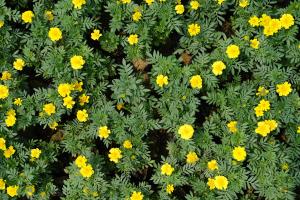Introduction
Tomatoes are a popular choice amongst fruits and vegetables for their nutritional value and versatility in cooking. However, growing tomatoes can be a challenging task as they are susceptible to a range of diseases. Tomato plant diseases can be caused by fungi, viruses, bacteria, or nematodes, and can significantly reduce crop yield if not prevented or managed adequately. This article will discuss how to prevent tomato plant disease and maintain a healthy tomato garden.
Choose Disease-resistant Varieties
One of the best ways to prevent tomato plant disease is to choose disease-resistant varieties. Many cultivars have been bred to be resistant to common diseases such as verticillium and fusarium wilt, bacterial spot, and tomato mosaic virus. Disease-resistant varieties are less likely to suffer from disease, require less pesticide application, and have a higher yield potential. When selecting tomato varieties, look for those that are marked as disease-resistant.
Practice Good Sanitation Habits
Practicing good sanitation habits is crucial in preventing the spread of tomato plant disease. Ensure you keep the garden clean and free of debris, such as fallen leaves, fruit, or vines. Remove any weeds that may harbor diseases or pests. After harvesting, dispose of any diseased plant material carefully. Do not compost it with healthy plant material. Ensure you clean and sanitize garden tools, stakes, and pots after use to prevent the spread of disease from one plant to another.
Optimize Growing Conditions
Tomatoes thrive in warm, humid environments and grow best in well-draining soil with a pH between 6.0-7.0. Ensure the plants receive adequate water and sunlight, maintain good air circulation to reduce humidity, and avoid overcrowding. Overcrowding plants may lead to increased moisture and interfere with proper air circulation, which can lead to the growth of molds and other fungal diseases. Provide support for the tomato plants to keep them off the ground, which can help prevent soil-borne diseases.
Maintain Adequate Nutrition
Healthy tomato plants are less susceptible to diseases. Fertilize the plants with a balanced fertilizer, rich in nitrogen, phosphorus, and potassium. However, ensure you do not over-fertilize, which can lead to excessive growth but reduce the plant's overall health, making them more prone to disease. Using organic fertilizers is also beneficial as they improve soil health and allow plants to absorb nutrients more efficiently.
Use Pesticides Sparingly
While pesticides can be an effective method for controlling or preventing tomato plant disease, overuse can lead to unintended consequences such as harmful effects to beneficial insects or buildup of pesticide resistance in pests. Use pesticides only when necessary and follow the instructions on the label properly. Additionally, consider using natural remedies such as neem oil, a natural insecticide that can help prevent fungal diseases.
Conclusion
Tomato plant diseases can be a challenge for gardeners, but they can be prevented or managed effectively by following some basic principles. Choose disease-resistant varieties, practice good sanitation habits, optimize growing conditions, maintain adequate nutrition, and use pesticides sparingly. By following these tips, you can maintain a healthy tomato garden and enjoy fresh, delicious tomatoes throughout the growing season.

 how many times do yo...
how many times do yo... how many planted tre...
how many planted tre... how many pine trees ...
how many pine trees ... how many pecan trees...
how many pecan trees... how many plants comp...
how many plants comp... how many plants can ...
how many plants can ... how many plants and ...
how many plants and ... how many pepper plan...
how many pepper plan...






























